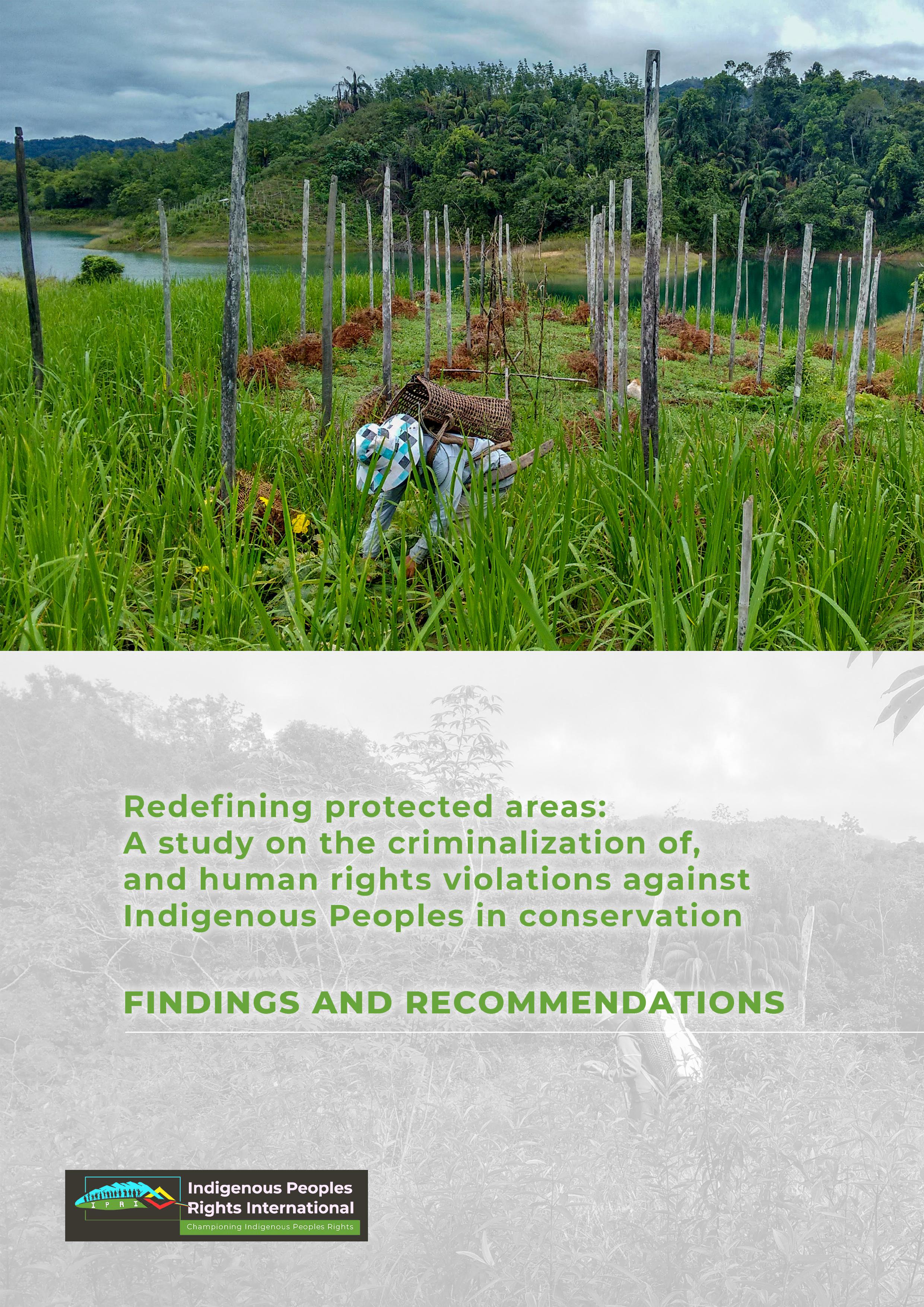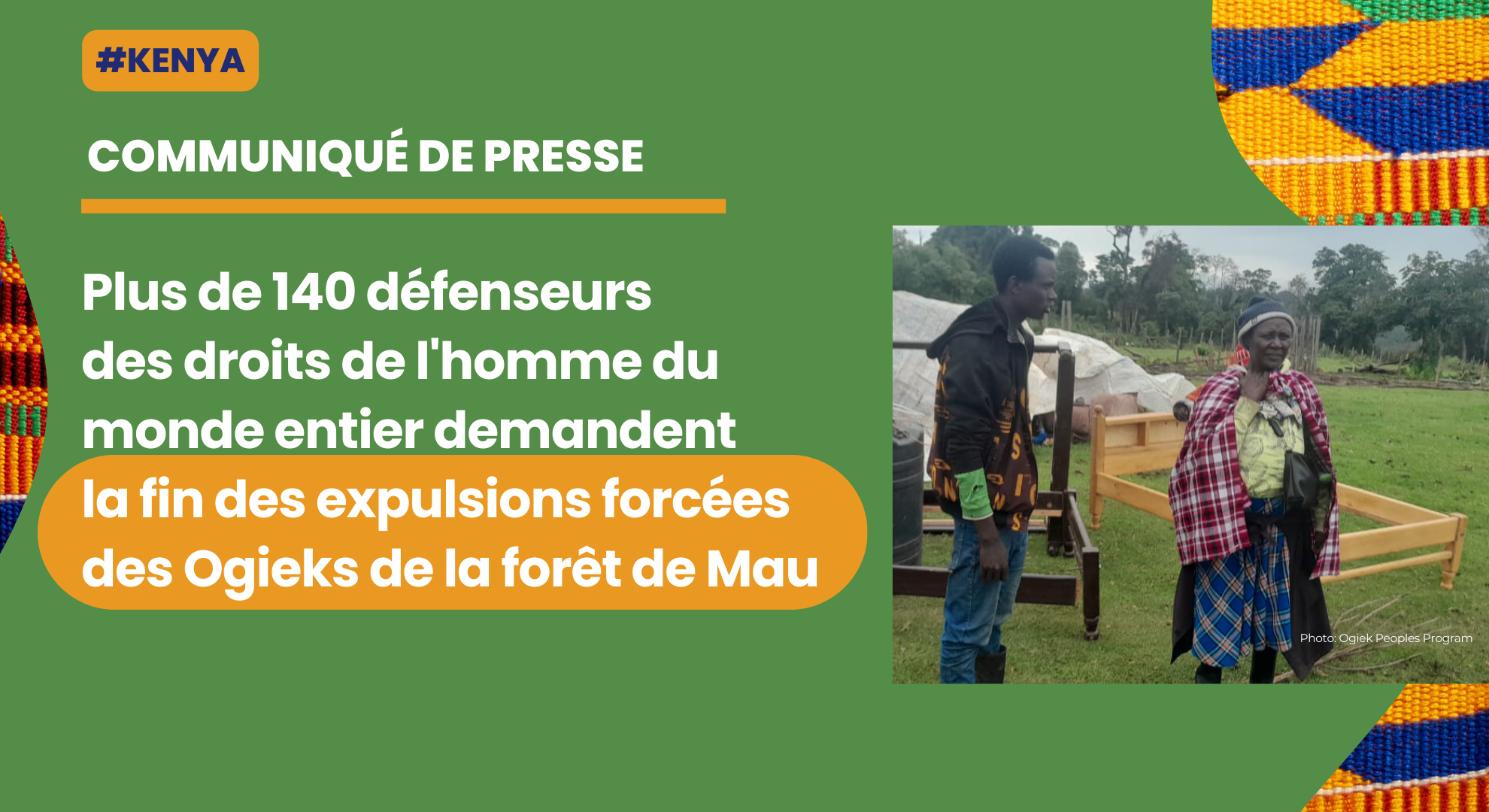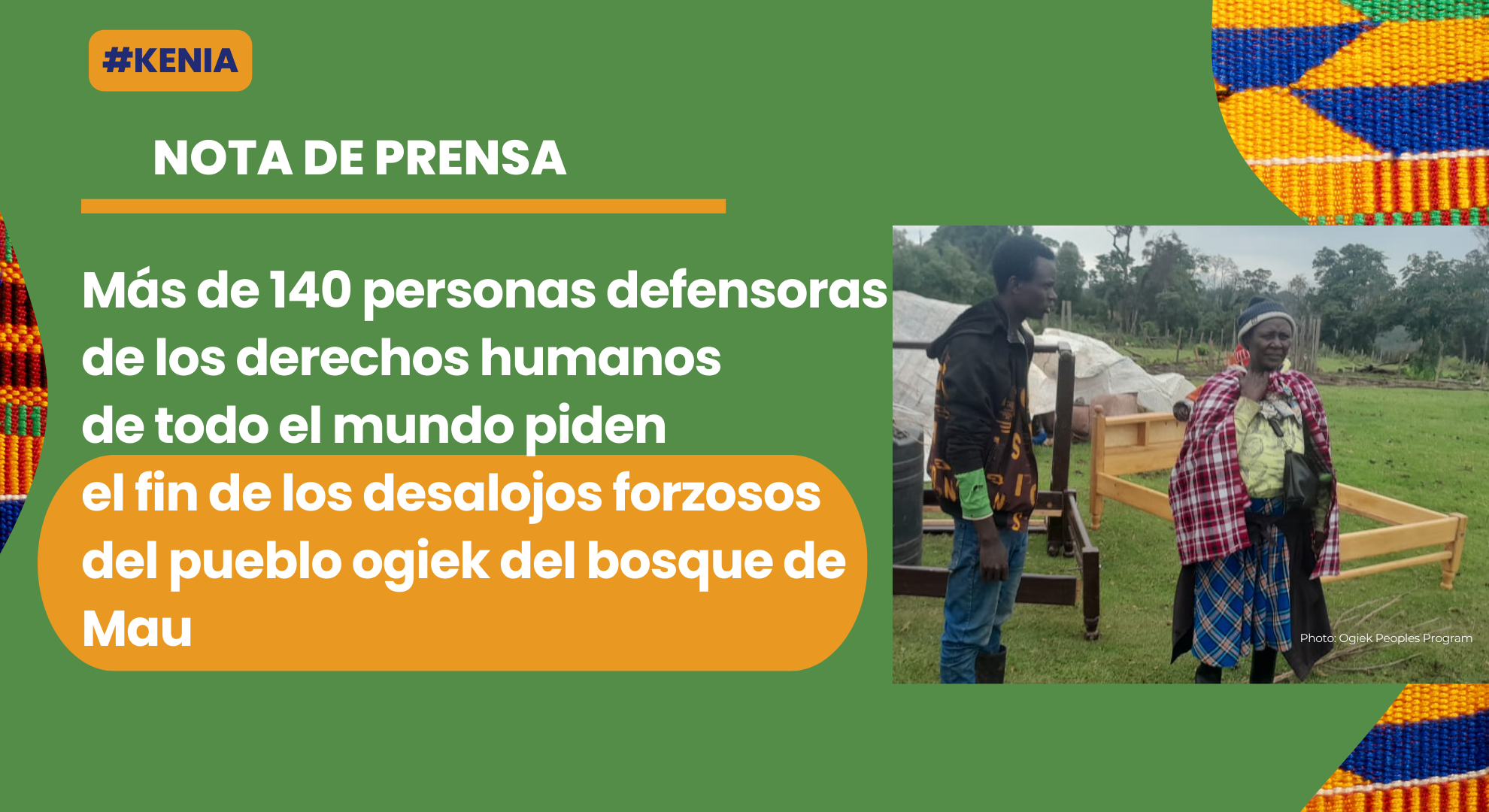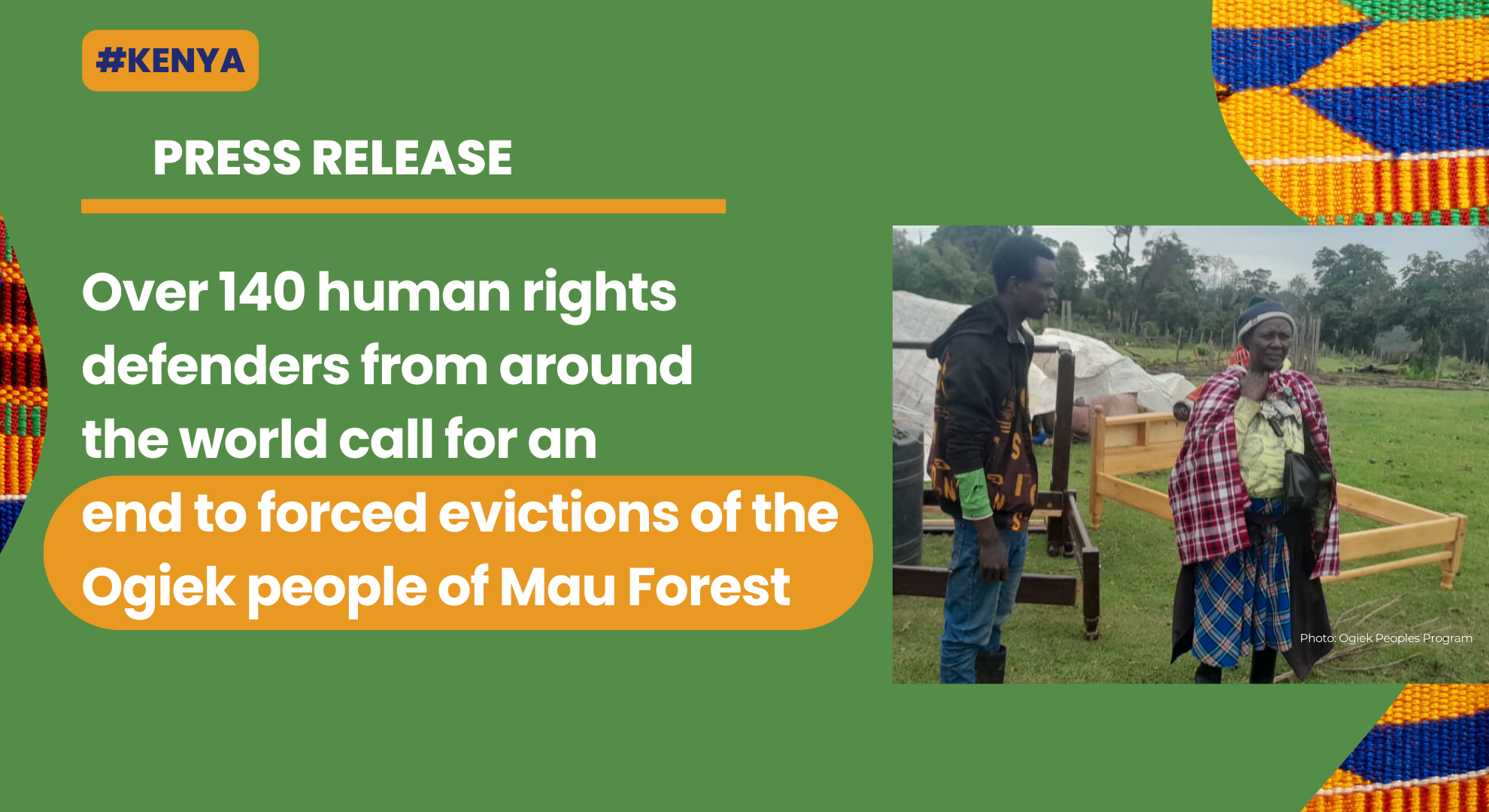As part of its advocacy against the criminalization of and human rights violations against Indigenous Peoples, the Indigenous Peoples Rights International (IPRI) is committed to contribute in advancing a human rights-based approach to conservation. With this objective, we have initiated a research study on this issue and commissioned global and country reports covering the Democratic Republic of Congo, Kenya, Tanzania, Nepal, and Thailand.
Background
As part of its advocacy against the criminalization of and human rights violations against Indigenous Peoples, the Indigenous Peoples Rights International (IPRI) is committed to contribute in advancing a human rights-based approach to conservation. With this objective, we have initiated a research study on this issue and commissioned global and country reports covering the Democratic Republic of Congo, Kenya, Tanzania, Nepal, and Thailand*. The study aims to contribute in raising awareness and attention to the issue of criminalization of, and human rights violations against Indigenous Peoples in relation to environmental conservation. We hope that it will be useful for Indigenous Peoples and human rights organizations in their advocacy initiatives at the national, regional, and global levels. We also hope the reports will be useful for states and conservation institutions when they develop programs and policies that aim to address human rights violations in conservation, including the access to justice and remedy of the victims; to advance a human rights-based approach in achieving the targets of Post-2020
Global Biodiversity Framework and in combatting climate change. Each report will be published by IPRI independently as separate country reports and the global report will include footnotes and list of references.
The findings and recommendations presented here integrate the discussions, findings and recommendations of the global and country reports.
Conservation, criminalization and violations of indigenous peoples' rights
Generations of Indigenous Peoples have experienced forced evictions from their customary lands in the name of conservation making them vulnerable to other human rights violations. These have caused serious and irreparable damages to their identity and ways of life. As they seek to live in safety and search for means to survive, the inter-generational transmission of their cultural values, knowledge and customary practices of using and managing their lands and natural resources is negatively affected. Their displacement from their customary lands is a key factor in their food insecurity, poverty, health problems, and the destruction of their subsistence economy based on mutual cooperation, to name a few. This desperate situation pushes displaced Indigenous Peoples to be dependent on state welfare programs and/or humanitarian projects which affects their dignity and wellbeing.
Further, the revenues from conservation through tourism and trade of carbon credit as part of the Reducing Emission from Deforestation and Forest Degradation (REDD+) projects do not benefit the Indigenous Peoples in many countries. In most cases, they are unaware of the extent of the economic gains of the state and international conservation institutions. These gains are at the expense of Indigenous Peoples’ losing their lands and the resources therein, and their individual and collective rights being violated. Likewise these revenues do not necessarily transform into dedicated programs for Indigenous Peoples that address the common challenges of impoverishment, lack of quality education and healthcare services, and sustainable livelihood, among others. Their situation is worsened by existing government corruption and underlying discrimination by the government itself, the media, and the society against them and their way of life.
In order to reverse the loss of biodiversity, it is noble and urgent to aspire and target for 30 percent of the Earth to be protected by 2030 as echoed in the zero draft of Post-2020 Global Biodiversity Framework of IUCN. However, states, conservation organizations and donors and relevant actors need to ensure this is fully aligned with a human rights- based approach to conservation to be reflected in clear policy commitments, actions, plans and mechanisms for implementation. If not, it can pose serious threats and contribute to the ongoing criminalization and human rights violations of Indigenous Peoples’ collective rights to lands, territories, and natural resources, self-determination, and cultural integrity in the name of conservation.
The prevailing conservation approach implemented by states and various international conservation institutions is rooted in colonialism and regards humans as separate from nature.
It negates the historical continuity of Indigenous Peoples as they have sustained their interdependent and reciprocal relations with their lands and territories resulting in the protection and sustainable management of their natural environment. As a consequence, this top-down and fortress conservation approach violates the individual and collective human rights of Indigenous Peoples.
Thanks to the sustained struggles of Indigenous Peoples in their assertion and defense of their rights and their engagement with the United Nations system, the UN Declaration on the Rights of indigenous Peoples (UNDRIP) was adopted in 2007 as the minimum human rights standard for the recognition, respect and protection of Indigenous Peoples’ rights. This set of rights includes, among others, the right of Indigenous Peoples to self-determination, their rights to their lands, territories and resources, and their rights to cultural integrity including their distinct cultural heritage. These inter-related rights are directly impacted by conservation policies, measures, programs, targets, and activities implemented in and around indigenous territories.
Several studies in recent years have validated that wildlife and biodiversity protected areas co-managed or with meaningful engagement with Indigenous Peoples have higher levels of biodiversity conservation and better management of climate issues (e.g., decreased occurrence of wildfires, reduced deforestation, etc.). However, Indigenous Peoples are commonly regarded as enemies of conservation instead of being recognized as stewards of nature. Indigenous Peoples’ cultures are considered ‘uncivilized’ and their ways of life backward. Their customary practices in natural resource use and management are not valued by states and other international conservation organizations, thus they are often criminalized instead of respected and protected. The prevailing discriminatory conservation policies perpetuate these stereotypes among the general public. These undermine the due recognition and appreciation of the invaluable role and contributions of Indigenous Peoples in environment protection and conservation.
Moreover, this continuing exclusionary or fortress conservation model remains a major factor in the criminalization, killing, enforced disappearance, violent eviction and massive displacement of Indigenous Peoples from their territories or communities. Indigenous women are affected disproportionately and face higher risk of gender-based violence during incidents of eviction and displacement.
The country reports of the Democratic Republic of Congo (DRC), Kenya, Tanzania, Nepal, and Thailand noted the following incidents of human rights violations within the period of January 2020 – June 2021:
- In DRC, there have been two incidents of killings involving five indigenous Batwa men. Three were killed after the violent dispersal of a protest by the Congolese Institute for the Conservation of Nature and the Armed Forces of the Democratic Republic of Congo. The other two were killed by eco-guards of the Kahuzi-Biega National Park. Two separate incidents of criminalization involved twelve Indigenous Pygmy people. Seven of them were arrested for searching for dried wood in the Virunga National Park and accused as accomplices of poachers. The other five were also arrested in the same Park for searching for medicinal plants.
- In Kenya, around a dozen arrests and trumped-up charges have been filed against Indigenous Peoples human rights defenders from Ogiek and Maasai communities, and a series of violent evictions were suffered by the Sengwer community in Kenya.
- In Tanzania, two incidents of violent evictions resulted in the burning of 23 settlements and the death of a four-year-old girl. Also reported was the criminalization of two members of the Maasai community, two incidents of abuse of power by armed wardens resulting in the suicide of a young pastoralist, and the destruction of property and confiscation of 135 cattle belonging to a group of Maasai young men who were grazing their livestock in Tanzania.
- In Nepal, two women and five men from the Indigenous Chepang community were tortured, and one of them died. Two members of the Indigenous Sonoha community were charged with illegal fishing in Bardia National Park. While collecting vegetables and ghongi (a kind of snail), 397 indigenous women were abused, mistreated, harassed, and slandered by the army. In Meghauli, Sisabas and Meghauli Jogital Majhe Tahara near the Narayani river, 178 indigenous men were abused, mistreated, humiliated. Nine of them were detained for three days, while some were forced to take photos holding tiyari jal, a net used for Findings and Recommendations | 5mass fishing, to be used as evidence against them. They were collecting forest foods and fishing in their own lands.
- In Thailand, 85 indigenous Karen, including 20 women, were illegally detained and 22 of them were charged with encroachment, construction, clearance, seizure, possession and other acts of degrading or changing the natural state of Kaeng Krachan Forest Complex without permission. There are 1,244 legal cases related to encroachment of forest areas, causing forest fire, logging and collecting non-timber forest products, and wildlife poaching under the Protected Area Laws of 2019 in Thailand’s protected areas which are home to around 2,000 indigenous communities.
Some initiatives at the international level and its limitations
Situations described above have made evident the need to adopt a human rights-based approach in responding to the global crisis relating to environment and biodiversity conservation including the respect and protection of the rights of Indigenous Peoples. In this sense, several initiatives have emerged at the regional and international levels.
The 2018 Regional Agreement on Access to Information, Public Participation and Justice in Environmental Matter in Latin America and the Caribbean, known as the Escazú Agreement is a legally binding regional instrument on environment protection. It has a holistic approach that ensures meaningful participation and recognition of Indigenous Peoples’ roles in conservation. It also addresses the issues of human rights violations around it. It is the sole legally binding instrument that includes specific provisions on environmental human rights defenders with specific accountability measures.
The UNESCO Operational Guidelines for the Implementation of the World Heritage Convention define the overall policy on engagement with Indigenous Peoples based on the respect for their rights. However, the guidelines need to address and provide clear measures to rectify past human rights violations in protected areas and national parks under their jurisdiction. Many existing UNESCO Heritage sites and protected areas were demarcated and declared as such without the free, prior and informed consent of affected indigenous communities and ignored their fundamental human rights. In fact, many Indigenous Peoples living within and around these areas continue to face threats of eviction, displacement, criminalization, and other human rights violations with impunity. Indigenous women and girls remain vulnerable to rape and sexual abuse by park authorities and the military.
Further, in July 2021, UNESCO World Heritage Committee approved the declaration of Thailand’s Kaeng Krachan Forest Complex as a World Heritage Site. The UN Special Rapporteurs, Indigenous Peoples organizations and their allies made a strong appeal to defer the decision until the legitimate concerns of the Karen Indigenous Peoples are addressed by the government of Thailand. Yet these were ignored. This is cause for serious concern on UNESCO’s sincerity to adhere to its policies to uphold the human rights principles enshrined in its Constitution
Conservation NGOs have also developed several initiatives to incorporate a human rights-based approach in their policies and practice. For instance, in 2020, the World Wide Fund for Nature (WWF) released its Environmental and Social Safeguards Framework. However, criticisms by civil society organisations hold that the framework still falls short of the transformational changes needed to ensure human rights protection in activities supported by WWF. For example, with the Principles on Law Enforcement and Rangers, it is unclear if, and how WWF plans to explicitly respect the rights of Indigenous Peoples affirmed by the UNDRIP, or any international human rights standard as guide. As pointed out by the former UN Special Rapporteur on the rights of Indigenous Peoples, Victoria Tauli-Corpuz, much more needs to be done to make these initiatives really operational and to ensure full respect for the rights of Indigenous Peoples.
The lack of adequate complaint and redress mechanism is a key concern in terms of addressing current and past violation of indigenous rights linked to conservation activities. Some conservation NGOs have established different initiatives, such as the WWF Ombudsperson Office. According to the recommendations of the independent panel of experts commissioned by WWF, organizations should operationalize Findings and Recommendations | 7and ensure the effectiveness of its Ombudsperson office which is envisioned to serve as WWF’s independent accountability mechanism. The panel recognized that the effectiveness of said office will depend on whether it has sufficient authority and resources. It also urged WWF to engage and respond to the advice and findings of the Ombudsperson once it is operationalized. The limitations of other mechanisms, such as Whakatane Mechanism, have also been assessed by indigenous organizations and their allies
National level
In general, the proper implementation of international human rights instruments is dependent on the current political environment at the country level, including the political will of states. This is also true for the decisions of national and regional courts that favor Indigenous Peoples, e.g., the Barabaig pastoralist case at Tanzania’s Court of Appeal and the Ogiek case at the African Court of Human and Peoples Rights. States are not implementing court decisions that uphold the rights of affected Indigenous Peoples. The effectiveness of international instruments is directly linked to the national legal recognition and implementation of Indigenous Peoples’ rights, rule of law and mechanisms for access to justice.
The country studies reveal that a number of conservation laws continue to discriminate, criminalize and restrict Indigenous Peoples’ customary practices and traditional occupation and livelihood such as subsistence hunting, gathering, fishing, shifting cultivation, etc., within and around these protected areas. These laws are still based on fortress conservation and top-down approach based on its colonial orientation. Despite states’ commitments and obligations to adhere to international human rights instruments that they endorsed, signed, and ratified, Indigenous Peoples’ rights are continually violated until today as they assert and exercise their collective rights to their lands, territories and resources, including the related customary resource management systems and governance.
Some examples identified in the reports are:
- Democratic Republic of Congo: (1) Loi N°011/2002 du 29 Août 2002 Portant Code Forestier / Law N°011/2002 of 29 August 2002 on the Forestry Code; (2) Loi N° 14/003 du 11 Février 2014 Relative à la Conservation de la Nature / Law N° 14/003 of February 11, 2014 on the Conservation of Nature8 | Findings and RecommendationsThe Forest Code regulates the management and use of forests and their resources. While Indigenous Pygmy peoples are recognized as custodians of the DRC’s tropical forests through their conservation practices, this law makes no mention of Indigenous Peoples and their traditional systems of governance and management of these forests. They are restricted to use forest resources as part of their customary lands
- Tanzania: (1) Wildlife Conservation Act no. 5 of 2009; (2) Ngorongoro Conservation Act no. 14 of 1959; (3) Forest Rights Act no. 14 of 2012
The laws allow nature-based tourism, commercial hunting, scientific education and research, but strictly regulate Indigenous Peoples’ access and use of these preserved areas. Indigenous Peoples are criminalized for hunting for food, grazing their livestock, and practicing subsistence cultivation within and around these preserved areas. They face constant intimidation from armed wardens and their settlements are burned and violently demolished
- Kenya: (1) Forest Conservation and Management Act no. 34 of 2016; (2) Wildlife Management and Conservation Act of 2013
The Forest Conservation and Management Act no. 34 of 2016 provides for the establishment, development and sustainable management, including conservation and rational utilization of forest resources for the socio-economic development of the country. Sections 46 and 47 provide that local communities are allowed to participate in forest management. However, the same law in section 39 provides for the declaration of natural reserves and prohibits livelihood activities that communities depend on e.g., grazing, fishing, hunting and honey collection. It further requires these groups of people to obtain permission and pay fees to access these resources. This law thereby criminalizes Indigenous Peoples’ traditional livelihood activities which are part of their sustainable management of their customary lands. The law has been used many times to deprive communities of their livelihoods through eviction . Forest communities are always targeted by the government that refers to them as encroachers or illegal settlers.
- Nepal: (1) National Park and Wildlife Conservation Act; (2) 1973 Land Reform Act of 1964; (3) Nationalization of Private Forest Act of 2013; (4) Pastureland Nationalization Act of 2013; (5) Land Survey Act, 2019
Sec.5(e) of the National Park and Wildlife Conservation Act, 1973 (hereinafter NPWCA) prohibits persons to occupy, clear, reclaim or cultivate any part or grow or harvest any crop (c), to graze any domestic animal or bird, or feed water to it (d), to cut, clear, fell, remove or block trees, plants, bushes or any other forest resources, or do anything to cause any forest resources dry, or set it on fire, or otherwise harm or damage it, (e) and to cause damage to forest resources or wildlife or birds or any land (g).
These prohibited activities are directly and indirectly related to Indigenous Peoples’ traditional occupations and livelihoods and they are subject to punishment with up to ten years of imprisonment or a fine of up to ten hundred thousand NRS ( 8414.35 USD). The term Kaidai (strict imprisonment) means it can not be converted into a fine. In fact, there is a high rate of conviction (77.58%) and low rate of acquittal (1.7%) in the cases relating to PA based on government data
- Thailand: (1) Protected Area Laws of 2019; (2) National Land Policy Committee Law of 2019; (3) National Forest Reserve Law of 2016; (4) Community Forestry law of 2019; (5) National Park Law of 2019; and (5) Wildlife Preservation and Protection Act on 24 May 2019.
The National Park Law of 2019 imposes severe penalties to those convicted of encroachment including up to 20 years in prison and payment of two million Thai Baht (around US$ 66,000) in fines. This is a clear case of criminalization of Indigenous Peoples exercising their right to live and or practice their traditional occupations and sustainable resource management systems in their customary lands that are designated as national park. Likewise, the Department of National Park reported that from October 2020 – June 2021, there were 1,244 legal cases filed for violating Protected Area Laws of 2019. These were charges of encroachment of forest areas, causing forest fire, logging and collecting non-timber forest products, and wildlife poaching in national parks, wildlife sanctuaries and non-hunting areas.
Recommendations
It is paramount and urgent to ensure that a human rights-based approach to conservation and environmental protection is adopted and properly implemented. This should be coupled with strong and effective accountability mechanisms at different levels to end the criminalization of and prevent the human rights violations of Indigenous Peoples in the context of conservation. To this end, IPRI makes the following recommendations:
To States:
States shall effectively adopt all the necessary legal, policy and administrative measures to respect, protect and ensure the human rights of Indigenous Peoples, including their right to self-determination and their rights to their lands, territories and natural resources.
States shall align their national environmental and conservation laws and policies with international human rights instruments, particularly the UN Declaration on the Rights of Indigenous Peoples, ILO Convention 169, UN Convention on the Elimination of All Forms of Racial Discrimination, and UN Convention on the Elimination of All Forms of Discrimination Against Women. To this end, States shall review their conservation and other environmental laws and policies towards ensuring recognition, respect and protection of the rights of Indigenous Peoples. This includes the repeal of laws that discriminate and criminalize Indigenous Peoples’ traditional occupations and management of their lands and resources.
States shall comply with their duty to consult and obtain the free, prior informed consent of indigenous peoples before the adoption of any conservation initiative, including the creation of protected areas overlapping or affecting indigenous lands and territories.
States shall comply with international, regional and national court decisions regarding Indigenous Peoples’ rights.
States shall establish effective mechanisms for access to justice and redress for victims of criminalization, human rights violations and violence against women and children linked to conservation initiatives, including for those who have been unjustly imprisoned and payed stiff penalties and those forcibly displaced or who have lost their livelihoods as a result Findings and Recommendations | 11of the implementation of discriminatory laws and a top-down conservation approach.
States shall support Indigenous Peoples’ own initiatives and sustainable conservation practices and they shall establish real partnerships with Indigenous Peoples to work together in the common goals of sustainable and equitable conservation.
States in the Latin American region shall ratify and implement the Escazú agreement.
Intergovernmental organizations
UNESCO shall properly implement their policies and guidelines regarding the respect for the rights of Indigenous Peoples. In particular, it shall reform the Operational Guidelines for the Implementation of the World Heritage Convention to align it fully with UNDRIP and ensure that Indigenous Peoples’ free, prior and informed consent has been obtained before the declaration of any World Heritage Site that may affect them, as reiteratively recommended by UN human rights bodies and experts.
To Conservation organizations:
To fully adhere to, and effectively implement a human rights-based approach to conservation including the full respect for the rights of Indigenous Peoples as enshrined in the UNDRIP. They shall take initiatives to address outstanding issues of indigenous communities, including cases of violence against indigenous women.
To establish equitable partnerships with Indigenous Peoples including indigenous women, to ensure their meaningful participation in decision-making in relation to conservation measures, programs and targets. In this sense, conservation organizations need to prioritize support to Indigenous Peoples’ own intiatives for the conservation of their lands, territories and biodiversity; and provide the needed support to indigenous women in enhancing their roles and contributions in the protection of the environment as well as addressing their needs and aspirations.
To ensure that the free, prior and informed consent of Indigenous Peoples has been obtained before engaging in any conservation initiative with States or other partners that affects Indigenous Peoples’ lands, territories and resources.12 | Findings and RecommendationsTo actively advocate with states, donors and other partners for the full respect of Indigenous Peoples’ human rights in any conservation activity.
To conduct participatory assessments and review their management of protected areas and national parks that overlap with Indigenous Peoples’ customary lands to address long-standing issues of affected indigenous communities in relation to the protection and exercise of their rights.
To establish effective mechanisms for the fair sharing of benefits and costs of conservation activities, fully respecting Indigenous Peoples’ rights to their lands, territories and resources, to self-determination, and to free, prior and informed consent.
To establish culturally adequate complaint and redress mechanisms that will allow for the prompt and effective response in cases of criminalization, violence and any human rights violations effecting Indigenous Peoples due to their conservation activities and take measures to actively work to prevent such violations. This should include particular measures to address violence against indigenous women and girls.
To conclude, we call on states and non-state actors including donors, to commit to the prevention of any further violations of Indigenous Peoples’ rights in conservation activities, and to establish and strengthen partnership with Indigenous Peoples for effective actions to conserve biodiversity, combat climate change and advance sustainable development for all.





